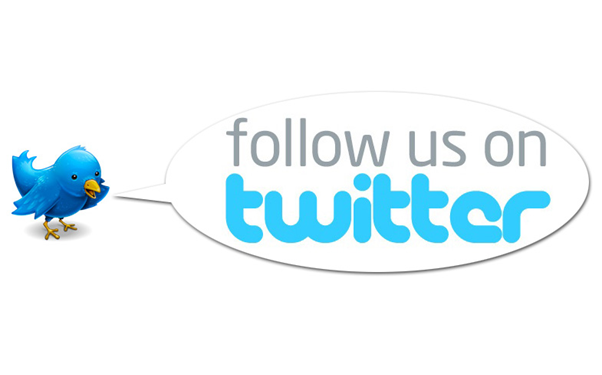Who To Follow On Your Business Twitter To Maximise Engagement

In order for Twitter to be an effective B2B tool, you need to give careful consideration to who you follow on your business Twitter account. The goal should be to maximise engagement, increase your social authority and to generate leads. We have spoken to a number of business people who have expressed frustration at the perceived lack of results from Twitter, but this is usually because ‘follow management’ is not approached in a systematic fashion. If you follow people on a haphazard basis, you risk diluting the impact of your content and missing out on content from genuine market leaders.
Social Authority (SA)
The first thing to consider when looking for accounts to follow is so-called social authority. Social Authority is a metric that gauges the influence of a Twitter user. It is measured on a scale of one to 100, with a rating of one denoting a user with no social authority, and 100 signifying extraordinary influence. You may think that users fall fairly evenly across the scale, but that is not the case.
Nearly 80% of Twitter users have a social authority between one and 10, with a further 11% having a score between 11 and 20. The big hitters – influential users with a high level of authority in their field and an SA score of 60 or more, comprise less than 2% of Twitter users. To give you an idea, Barack Obama has a social authority of 92, Rhianna 94, Rand Fishkin (SEOMoz) 71, YouTube 83 and Justin Bieber 100.
Several considerations make up the social currency that goes into determining social authority. These include:
- The number of followers compared with the number of people followed. The higher the number of followers compared to those followed indicates a higher social authority. For instance, Alan Sugar’s Twitter account has 5.18 million followers, but he only follows 875.
- Consistent activity over time. An account that posts once a day with regular retweets will have a higher social authority than one that posts 100 times in a month and then does nothing for a year.
- The number of retweets
- The number of shares outside Twitter e.g. on Facebook or Pinterest.
- The number of hourly @mentions
So when determining who to follow, you should be looking at decision-makers in your industry with a high social authority. As SA is based largely on retweets, then start looking for people in your industry with a relatively high number of followers – as to have 25% of your tweets consistently retreated you are likely to need around 100,000 followers. There is an app available called Followerwonk that can help you determine SA and find influencers within your field.
Of course, you can’t entirely populate your account with high rollers, and nor should you aim to, as the loftiest authorities in your industry are likely to be difficult to connect with. However, being mindful of social authority enables you to strike a balance between followers with high, medium and low levels of authority in your market, giving you an overall profile of business follows with a high net SA score.
Who to Follow

The issue of social authority aside, what sort of person should you be following on your business Twitter? The first thing we have to say is to keep it business focused. If you want to follow Milton Jones or Katy Perry then great, but do this on your personal Twitter, not your business feed. Otherwise you risk missing important tweets from relevant accounts.
Other than that, focus on the following types of user:
- Professional bodies and regulatory groups: These may include, for instance, the Chartered Institute of Marketing (CIM), the HSE or National Union of Teachers (NUT). Delete as appropriate for your industry. These top-level organisations are a great source of industry news and trends. Your local Chamber of Commerce (if you are a member) will also fall into this category. You may also want to follow your local MP and Local Authority.
- Journals and forums: Another great source of news; follow the main professional journals and online forums in your industry, such as Construction News, Tradeshub etc. Following some local media sources may also be useful. For national press, it is better to follow individual journalists, as we’ll see below.
- Market leaders: These are the Twitter accounts of the biggest competitors in your industry. For instance, for IT businesses it would be Microsoft, Apple, Oracle etc. These businesses are a good barometer of industry news.
- Direct competitors: Follow the business accounts of similarly sized businesses to your own, and the business Twitters of named directors within those organisations.
- Suppliers: Include all your existing suppliers here, and add to them any contacts you may find useful, such as specialist recruitment agencies.
- Customers and prospects: Make a point of following all the key decision-makers within your customer companies, as well as any leads that come through. When you get a sales enquiry from a business, you can usually use Twitter to determine who the decision-makers are in that company, and follow them to start building a relationship.
- Influential people: This is a broad category, but it could include important funding bodies, philanthropists, entrepreneurs and former directors who still hold influence within their field.
- Media contacts: Twitter is a good way of targeting relevant journalists and media outlets, especially when publicising promotions or issuing press releases.
Who not to follow
There are several things to avoid when building up a bank of follows on your Twitter account, apart from Justin Bieber and company.
Firstly, the ultimate aim of following a user on Twitter is to get their attention, to engage with them and to get them to follow you back. So there is not really much point following an account that follows few or no users themselves. The chances of them following you back are slim to none. The exception to this rule is if you are following an account simply as a source of industry news. Equally, you are unlikely to be able to form any meaningful dialogue with a user who follows 500,000 people, as your content will be lost among a flood of data on their Twitter feed.
Secondly, don’t feel you have to follow all of your colleagues and individual employees within your supplier and partner companies. Twitter is not like Facebook – restrict your Twitter feed only to following decision-makers within a particular business. That means directors, senior managers and department heads, not receptionists, sales people and technicians.
Thirdly, don’t give people sympathy follows. By this we mean automatically reciprocating when someone follows you. A lot of businesses do this because they don’t wish to appear rude, without regard to the social authority and relevance of the follower. Figure out what kind of engagement you will be able to leverage from the follower before deciding whether or not to follow them back. This may sound harsh, but ultimately it will save you both wasted time.
Grow selectively
Being selective about who you follow on your Twitter account enables you to focus on the content and contacts that are most relevant to your business. If you want to maximise engagement with your industry through Twitter, then you need to be savvy about your follows and the people you choose to connect with. This will make the data you receive through Twitter more meaningful and usable, and will let you start building up a group of relevant followers of your own within your target niche.
Please read our other articles and learn how you can get the most out of social media to achieve more leads today.
- How To Effectively Manage Your Business Twitter To Get More Leads
- How To Use LinkedIn For Business Development In 8 Steps
- Facebook Marketing For B2B Lead Generation


